![]()
As a homesteader, I find joy in being self-sufficient and growing my own produce in a small garden. While I may not have truckloads of produce, I believe in sharing the easiest and less complicated methods to cultivate salad greens, tubers, fruits, and vegetables.
One of my favorite shortcuts to avoid backbreaking tasks is building a potato tower to grow regular potatoes. In this guide, I’ll provide technical instructions on how to construct and benefit from a potato tower on your homestead.
What Is a Potato Tower?
A potato tower is a creative and space-efficient gardening method used to grow potatoes. It involves constructing a vertical structure, typically using chicken mesh or similar materials, and filling it with a mixture of compost and organic manure.
Potato cuttings or seed potatoes are planted within the tower, allowing the plants to grow upward instead of spreading across the ground.
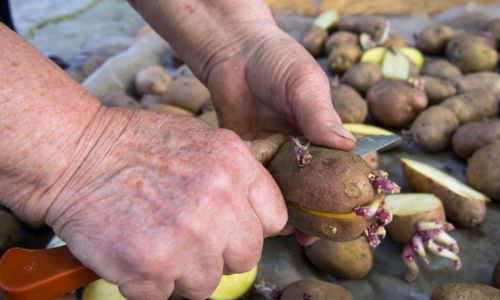
This ingenious approach maximizes growing space, facilitates easy harvesting, and provides better air circulation and drainage for healthier plants.
The potato tower is a popular choice for home gardeners and homesteaders looking to produce a bountiful harvest of nutritious potatoes in a small footprint.
Pests and Diseases
Potatoes can attract certain pests like potato beetles, aphids, and wireworms.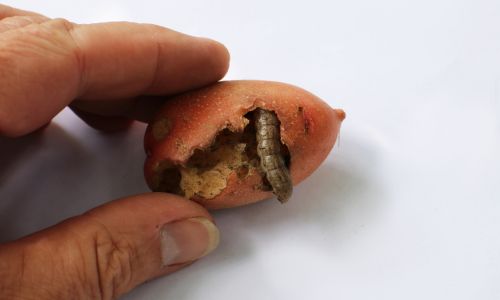
To mitigate infestations, practice companion planting with pest-repelling herbs like mint or lavender. You can find here high-quality, NON-GMO seeds packaged in US.
Regularly inspect the plants for signs of pests and apply organic pest control measures as needed.
Potatoes can also be vulnerable to fungal diseases such as late blight and black scurf. Ensure good air circulation around the plants and avoid overwatering to prevent these issues. Additionally, practice crop rotation to reduce disease buildup in the soil.
Building the Potato Tower
It was super easy to build my potato tower. The materials are cheap or maybe you already have them in your homestead and there are only a few instructions to follow.
1. Gather your materials
You’ll need wire mesh or hardware cloth, straw or hay, compost or soil, potato cuttings or seed potatoes, zip ties or wire, and stakes (optional for additional support).
2. Create the Cylinder
Cut a section of wire mesh or hardware cloth to the desired height and length. The length should be enough to form a cylinder with a diameter of about 2-3 feet.
Related: DIY Projects to Hide Your Survival Plants in Plain Sight
Shape the wire mesh into a cylinder and secure the ends together using zip ties or wire.
3. Position the Tower and Add a Base Layer
Choose a sunny spot in your garden for the tower and place the wire mesh cylinder upright on the ground.
Lay a thick layer of straw or hay at the bottom of the tower. This helps with drainage and provides a loose medium for potato roots to grow through.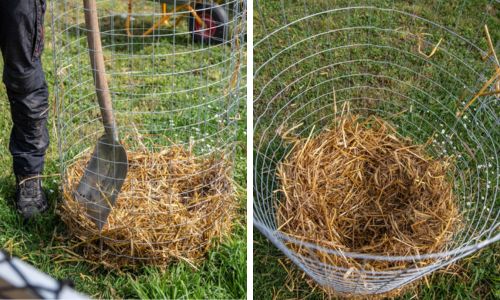
4. Add Soil and Potatoes
Add a layer of compost or soil on top of the straw, about 4-6 inches deep. Place your potato cuttings or seed potatoes on the soil layer, spacing them evenly around the edge of the tower.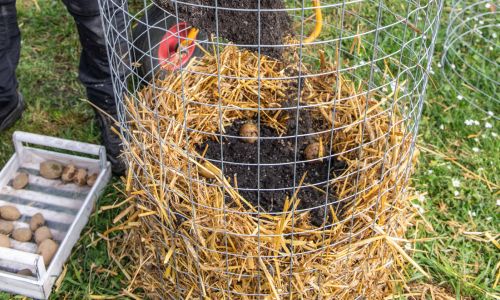
5. Repeat the Layers
Cover the potatoes with another layer of straw, then add another layer of soil. Continue layering straw and soil, adding more potato cuttings at intervals, until you reach the top of the tower. Ensure each potato layer is covered with soil.
6. Water the Potato Tower
Water the tower thoroughly after planting to help settle the soil and start the growing process. Keep the tower consistently moist but not waterlogged.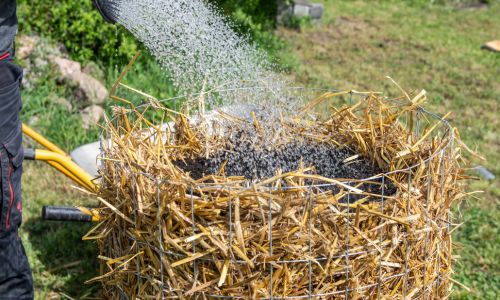
As the potato plants grow, they will emerge from the sides of the tower. Keep adding straw and soil as needed to cover the growing stems, which encourages more tubers to form.
7. Plant the Final Layer of Potato Cuttings
Once the tower is filled to the top with the alternating layers of straw and soil, plant a final layer of potato cuttings on the surface. Space them evenly to ensure good growth.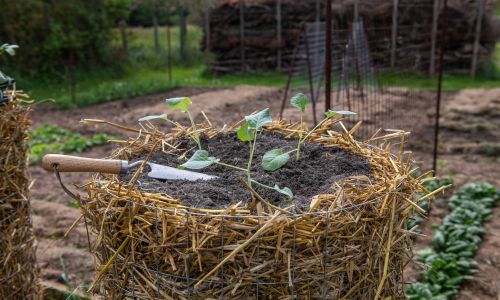
8. Harvesting
Once the plants have flowered and begun to die back, it’s time to harvest. Simply dismantle the tower by removing the wire mesh, and collect your potatoes from the layers of soil and straw.
Other Methods to Grow Potatoes
Potatoes are a versatile and nutritious staple in many diets, making them a popular choice for home gardeners and homesteaders.
While traditional methods of growing potatoes in the ground can be effective, there are several ingenious techniques that have emerged to maximize space, improve yields, and make cultivation more accessible.
⇒ This Is the No #1 Enemy of Potatoes
Among these innovative approaches, the potato tower stands out as an excellent and practical solution. Let’s explore some of the ingenious methods and why the potato tower takes the lead.
Traditional In-Ground Planting
The most common method of growing potatoes involves planting them directly in the ground.
While this approach works well for many gardeners, it requires ample space and can be labor-intensive during harvesting.
However, it remains a reliable option for those with enough land and the willingness to put in the effort.
Raised Bed Potato Gardening
Raised beds are another ingenious way to grow potatoes. By elevating the planting area, gardeners can improve soil drainage and create a controlled environment for the tubers.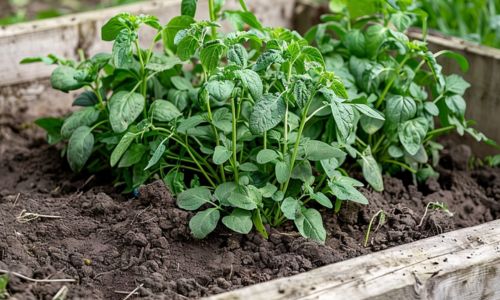
Raised beds also help prevent soil compaction, making it easier for the potatoes to develop without obstruction.
Straw Bale Potato Gardening
Straw bale gardening is a unique technique where potatoes are planted directly into decomposing straw bales.
As the straw breaks down, it provides a nutrient-rich environment for the tubers to grow. This method reduces the need for digging and promotes good aeration for the roots.
Potato Grow Bags or Containers
Potato grow bags and containers have gained popularity for their adaptability in various settings, including small gardens, balconies, and patios.
Related: How to Grow Potatoes in Shopping Bags for an Extended Harvest
These bags allow for easy mobility, better soil aeration, and effective drainage. However, the limited soil volume in containers can sometimes lead to smaller yields compared to other methods.
Hilled Rows
Hilling is a traditional practice where soil is mounded around the potato plants as they grow. This encourages the development of additional tubers along the buried stems.
While hilling can be effective, it requires regular maintenance and can become cumbersome for larger potato plots.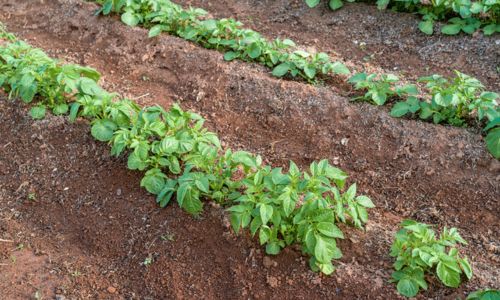
Why the Potato Tower Stands Out
Among these ingenious methods, the potato tower offers several distinct advantages that make it the best choice for many gardeners and homesteaders:
Space Efficiency: The potato tower maximizes vertical space, making it suitable for gardens with limited land or for those who want to grow potatoes on patios and balconies. It allows for significant potato production in a small footprint.
Easy Harvesting: Harvesting potatoes from a tower is remarkably simple. Instead of digging into the ground, you can lift the tower or remove sections to access the tubers easily, saving time and effort.
Improved Air Circulation: The tower design promotes better air circulation around the plants, reducing the risk of fungal diseases and creating a healthier growing environment.
Effective Drainage: The structure of the potato tower ensures proper drainage, preventing waterlogged soil and minimizing the risk of root rot.
Cost-Effective: Building a potato tower can be done using affordable and readily available materials like chicken mesh, making it a budget-friendly gardening solution.
As a homesteader, I’ve found the potato tower to be a valuable addition to my garden. A potato tower is an excellent solution for homesteaders seeking a space-efficient and productive gardening method. While they may face some pests and diseases, vigilant monitoring and natural pest control measures can help ensure a successful and rewarding harvest.
This article first appeared here.
You may also like:
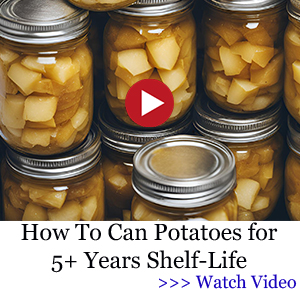 7 Things That You Should Never Do After an EMP
7 Things That You Should Never Do After an EMP
How to Build a Hidden Food Growing Fence in Your Backyard (Video)
Never Throw Away Your Wood Ash! Do This Instead
8 Nuclear Attack Myths You Should Stop Believing
Blue Barrel Uses You Never Thought Of


